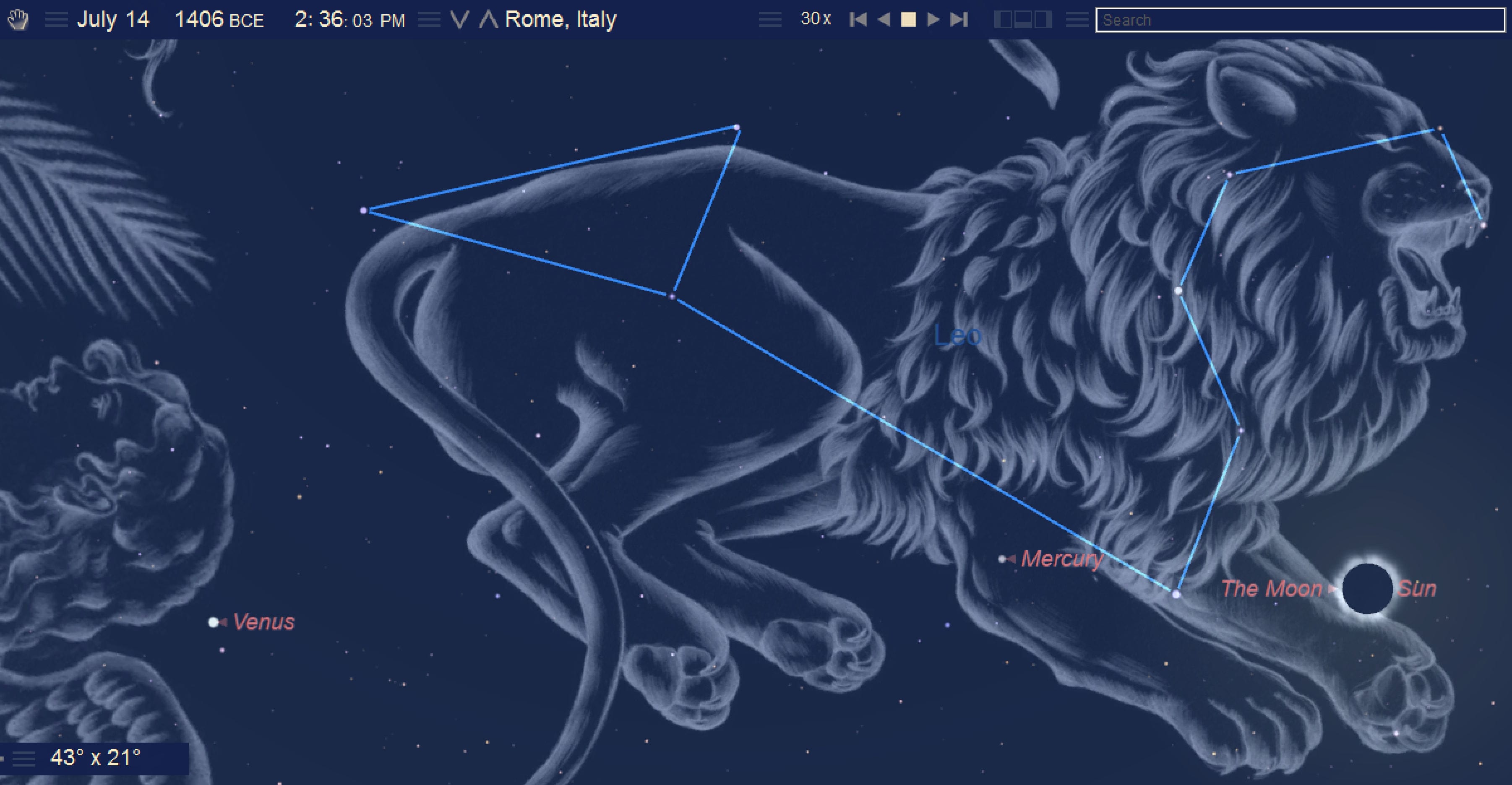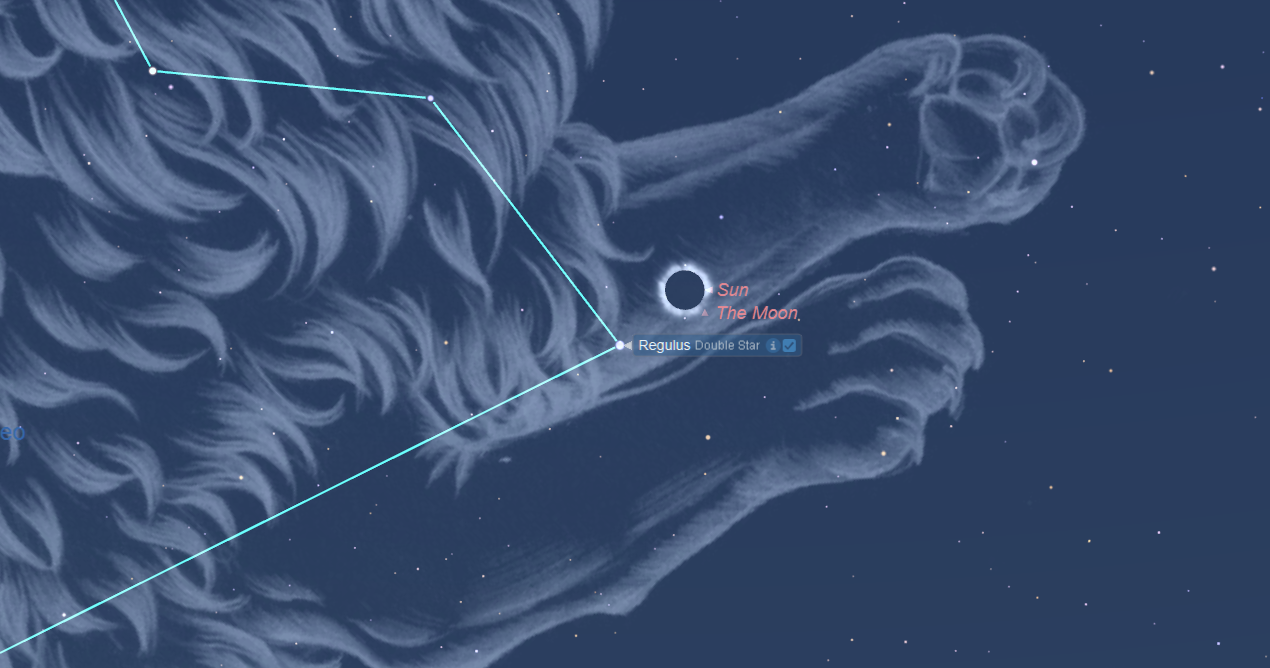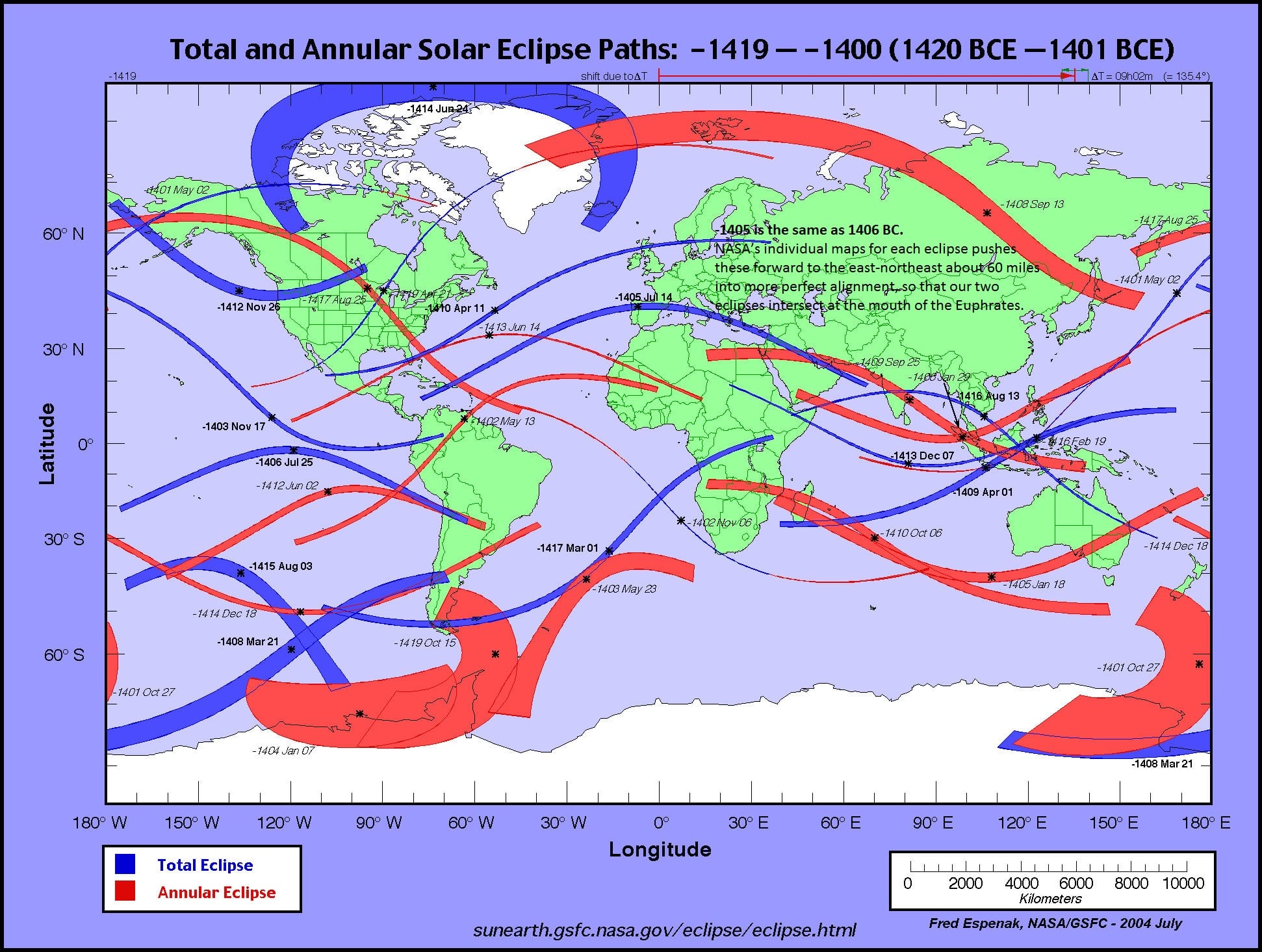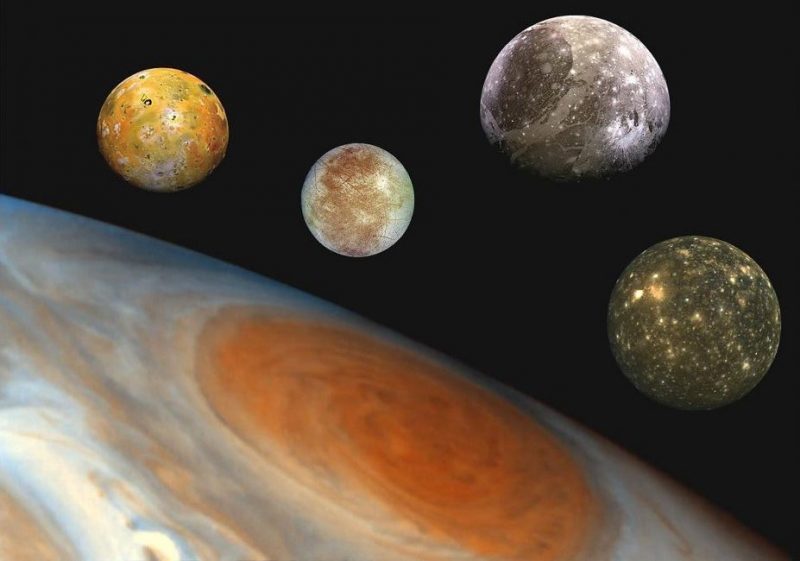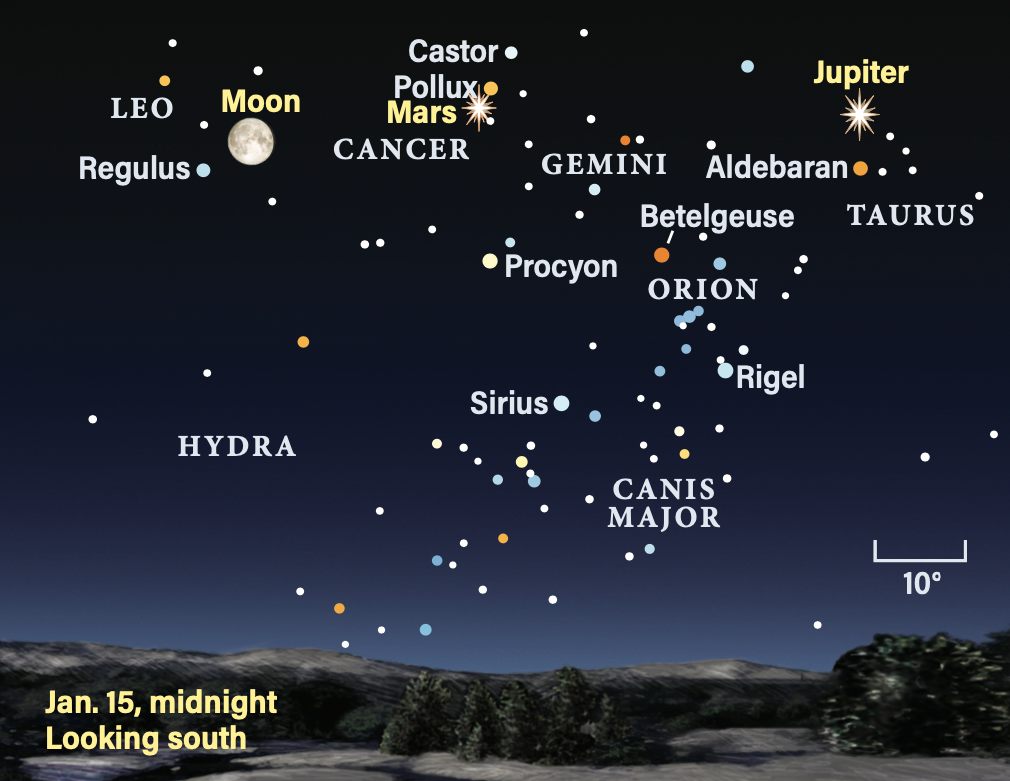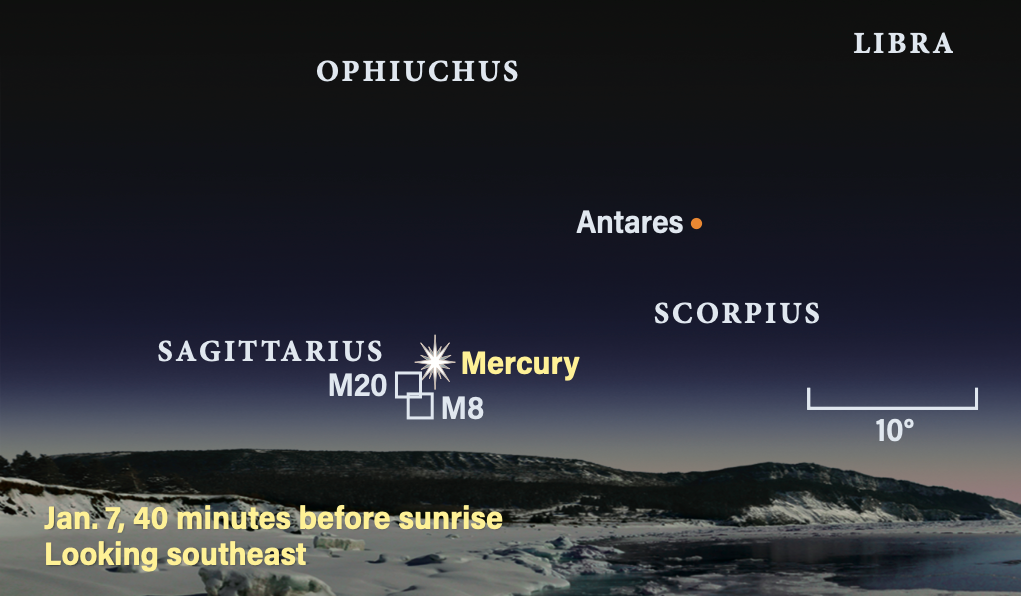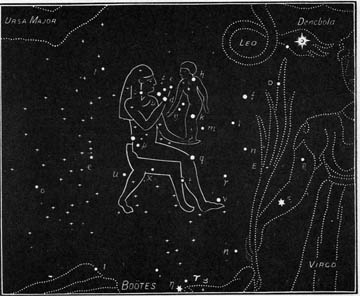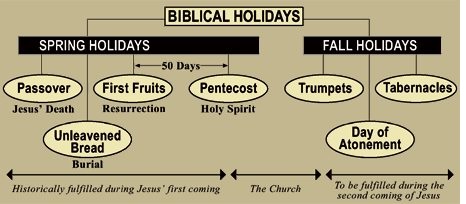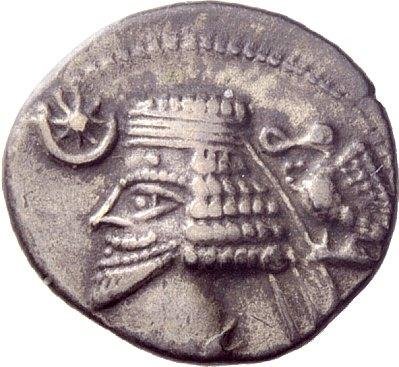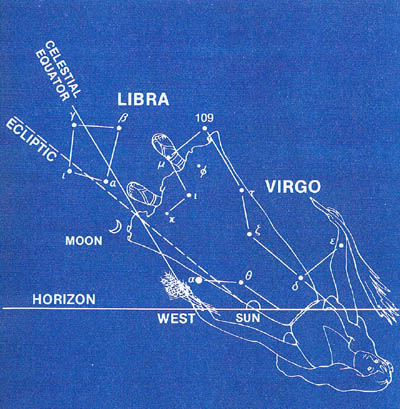
The 19-year Metonic Eclipse Cycle, and the Jubilee as a History of Israel
In the Celestial Gospel we find Cosmic Narratives of the Coming Redeemer, told by the Almighty Cosmic storyteller, One God Who dwells outside of time, with a full Divine view of time past, present and future. Eclipses are a most profound model in Nature that asserts cosmic timekeeping relating to human history. This divine pattern is portrayed distinctly in the Temple and Tabernacle of Israel, [Ex. 25:9; 2 Kgs. 16:10, Deut. 4:16-18, Ps. 144:12, Ez. 8:10, 10:8, H8403, #1 structure, from H1129–banah: to build. Form, figure, model, image, likeness.]#2 Heb. 8:9-13, 9:23–pattern of things in the heavens–Ouranos [Mk. 13:25, G5262–hupodeigma; an exhibit for imitation or warning]#3 Almighty God Who lead Israel on their journey through the wilderness, gave them His Tabernacle whose structure was based on a manifestation of a perfect sublime pattern, often startling in its beauty and symmetry that embodies distinct similarity to artistic, and musical precepts.-Phi/Pi. The Creator of these patterns is worthy of reverence & awe.
The focus of this study on Eclipses is narrowed down to how the Metonic cycle of 19 years has dictated a special class of eclipses that bears a unique relation to the history of Israel, in these last times. We will expose the link between eclipse cycles and the end times, and answer the question why does a period between these eclipses fall just short of 7 calendar years? This blog includes aspects of reprint articles, detailing why stellar prophecies in the Bible, especially with eclipses do not refer only to calendar years.
This study is designed to summarize recent eclipses starting with the Blood Moon Tetrads in the formation of the nation-state of Israel, and following including the Blood Moon Tetrads of 2014/2015, and the 2020 decade with their Metonic Partner Blood Moon Tetrads of 2033/ 2034. We find two key Equinox eclipses in the North Pole Spring Equinox Eclipse of 3-20-2015 with its Metonic partner in the 3-20-2034 Great Equinox Eclipse, exactly 19-years later. This Metonic 19-year period is bracketed by Blood Moon Tetrads and Equinox Eclipses, marking some of the most notable eclipses in history, whose Shadow paths outline conflicts and actions of key ancient and modern world empires.
As we close in on the 2000-year historic anniversary of the Crucifixion, Resurrection & Ascension of the Lord Jesus Christ, this central event in human history is certainly the focus of celestial history even as it is in Scripture. In the pre-ponderance of Biblical, historical and chronological evidence resulting from decades of Biblical research and teaching, April 28th, 28 AD is not only the most likely candidate for the date of Christ’s crucifixion, it is the strongest and firmly supported option that fits the accuracy of Biblical timelines on this subject. This fell not only during the time Pontius Pilate was Governor of Judea, but also based on calculations of Herod’s death eclipse in January, 1 BC, not 4BC. We also include Bible guidelines of Jesus at 30 years old, when by Judean law, he was qualified as an adult, to carry out his ministry in 1-year [not 3] called the “acceptable year [singular] of the Lord,” according to Bible prophecy, [Isa. 61:1-2]. Jesus quoted Isaiah’s text in his Synagogue lesson in [Luke 4:18-19], but did not quote the entire text, halting mid–verse 2, since “the day of vengeance of our God,” was and still is, a future event, as part of God’s wrath in the day of judgment, having no part of Christ’s ministry in his first Advent.
As we view the Luni-Solar eclipse cycles, we begin with a 346.62 day eclipse year, wherein the moon, earth and sun are realigned in the same lunar node on the ecliptic. This involves the coordination of three different kinds of years:
Solar Year: The Earth’s orbital cycle around the sun; 365.242 days
Lunar Year: The Moon’s cycle completes 12 Earth orbits of; 354.3 days
Draconic Year: when the Earth, moon and sun align at a Lunar node on the ecliptic; 346.6 days. #4
We shouldn’t focus on any one of these types of years, in favor of a coordinated view of all three. As the 3 yearly cycles align, it forms a pattern that allows us to predict eclipses, most clearly evident in the 19-year [6940+/- day] Metonic cycle. This cycle of nearly 6940 days, as an eclipse cycle is taken as 235 synodic months, only an hour and a half less than 19 years of 365+1⁄4 days. It is also 5 “octon” periods and close to 20 eclipse years, so it yields a short series of four or five eclipses on the same calendar date, or on two calendar dates. It’s also equal to 110 “hollow months“ of 29 days and 125 “full months“ of 30 days. #5
Thus, eclipses generally repeat about the same day of the year every 19 years. Eclipses are easier to predict by the Saros cycle of 223 lunar months, or about 18 years and 11 days, which is also 19 eclipse years.
As the Almighty Creator of Heaven and Earth spun the Sun, Moon and Stars in their cycles according to His perfect and Omniscient timing, we can gain an understanding of His order of Creation, and set our lives in correspondent order with the Father of Lights. [Gen. 1:14-19]
The Great American Eclipse crossing from Aug. of 2017 to April of 2024 that formed an “X” over America has left its mark on our awareness of the times which we inhabit. These Solar eclipses may serve as a warning of impending judgments, or at least cause us to question or wonder at the celestial cycles behind this phenomena, has certainly gained a new set of fans. The focus of the eclipse crossing, or the “X” in the central US, has many aspects including the US crossing point of these eclipses near the New Madrid fault zone. This fault zone is 6 times larger than San Andreas’ fault zone in California, over parts of Illinois, Indiana, Missouri, Mississippi, Arkansas, Tennessee, Ohio & Kentucky. Back in 1811-1812, a damaging series of earthquakes on the New Madrid fault zone opened deep ground fissures, causing the Mississippi river to run backwards in some places, that reportedly was felt as distant as Boston & Washington DC. As the strongest earthquakes ever seen east of the Rockies, the heart of this “X” fell closest to the longest area of eclipse totality, exactly in the area where we would expect such an earthquake. This does not mean these three solar eclipses are predicting an earthquake event, but it may serve to warn America to repent and turn to God, reminding us that the Day of Christ’s crucifixion darkness was attended also by a great earthquake.
As we review the context of the total solar eclipse on August 21st, 2017–the 2nd Pan-American Eclipse across the US, we find the following dates, shown with the Regulus unions in Leo, and the Jupiter–Venus triple union in Virgo in 2016-2017, as signs of the Celestial Sphinx:

July 30th, 2016 Mercury-Regulus Conjunction
Aug. 5th, 2016 Venus-Regulus Conjunction
Aug. 26-27th, 2016 Jupiter-Venus conjunction [Jupiter enters Virgo]
Feb. 26th, 2017 Jupiter-Venus conjunction
August 21st, 2017 Total Solar Eclipse in Leo @ Regulus
Sept. 23rd, 2017 [Virgo clothed with the Sun/Moon @ feet]-Rev. 12:1-2
Sept. 30th Yom Kippur-Day of Atonement
Nov. 13th, 2017 Jupiter-Venus conjunction
The two brightest planets –Venus and Jupiter –teamed up to provide the closest planetary conjunction of 2014, which has been the closest Venus–Jupiter union in the 6 Lunar Eclipses of 2014-2016, until August 27, 2016, when Jupiter the King planet came into Virgo eventually to be “birthed” in 2017. This birth does not embody the birth of Christ himself, but the birth of his Kingdom which was rejected by the Jews, who crucified him in 28 AD. The triple union of the King planet Jupiter with Venus the Bright and Morning Star, on Aug. 27th, saw these two planets three times closer than in their 2015 conjunction when they were separated by only 1/3 of a degree.
The 2017 eclipse marked the last seven-year cycle before Israel’s 70th Jubilee.
- Unlike lunar eclipses (except the Passover-Tabernacle tetrad lunar eclipses of 2014-2015), total solar eclipses are rare. #6
- God has used solar eclipses as signs before. The following is detailed, but very important. It shows that God has used eclipses to communicate His plans and can be expected to do so again. Jesus said, “And there shall be signs in the sun, and the moon, and the stars” (Luke 21:25). Around July of 1406 BC, the same year the Jubilee count began, as Israel entered the Promised land- Joshua commanded the sun and moon to stand still while Israel defeated the Amorites, (Josh 10:12). However, there was another celestial sign left unrecorded that occurred about the same time.
On July 14, 1406 BC, at the front paws of the constellation Leo, a total solar eclipse occurred. Compare the similarity and the location of the two eclipses.#7
Thus, the 1406 BC eclipse was in a very similar place as our 2017 eclipse. To understand the eclipse at the start of the Jubilees sheds great light on our grasp of the 2017 eclipse near the end, 70 Jubilees later. Thus we should consider what follows carefully!
Plate 1. Total Solar Eclipse near Regulus in Leo, 8/21/2017. #10

On July 14, 1406 BC, as Israel fought the Amorites, led by Joshua, they defeated the idol worshipping tribes and nations marked by the path of the narrow lunar shadow that crossed over the altars of false worship under its course. Starting in SW Europe where the Atlantic meets the Med– the place Columbus would later sail home after “discovering” America, passing through Spain, and over Rome’s seven hills, then the Greek gods of Mt. Olympus, the Island of Patmos along with the seven churches of the Book of Revelation, Tarsus, then along the southern side of the northern border of Israel (visible by warring Israel, Josh 10). This included Mt. Hermon of Bashan. It then proceeded along the river Euphrates to Babylon, Ur, and Eridu and its (Tower of Babel), to exit out of the mouth of the Euphrates (the eastern-most border God promised to Israel), and Susa (of Persia).
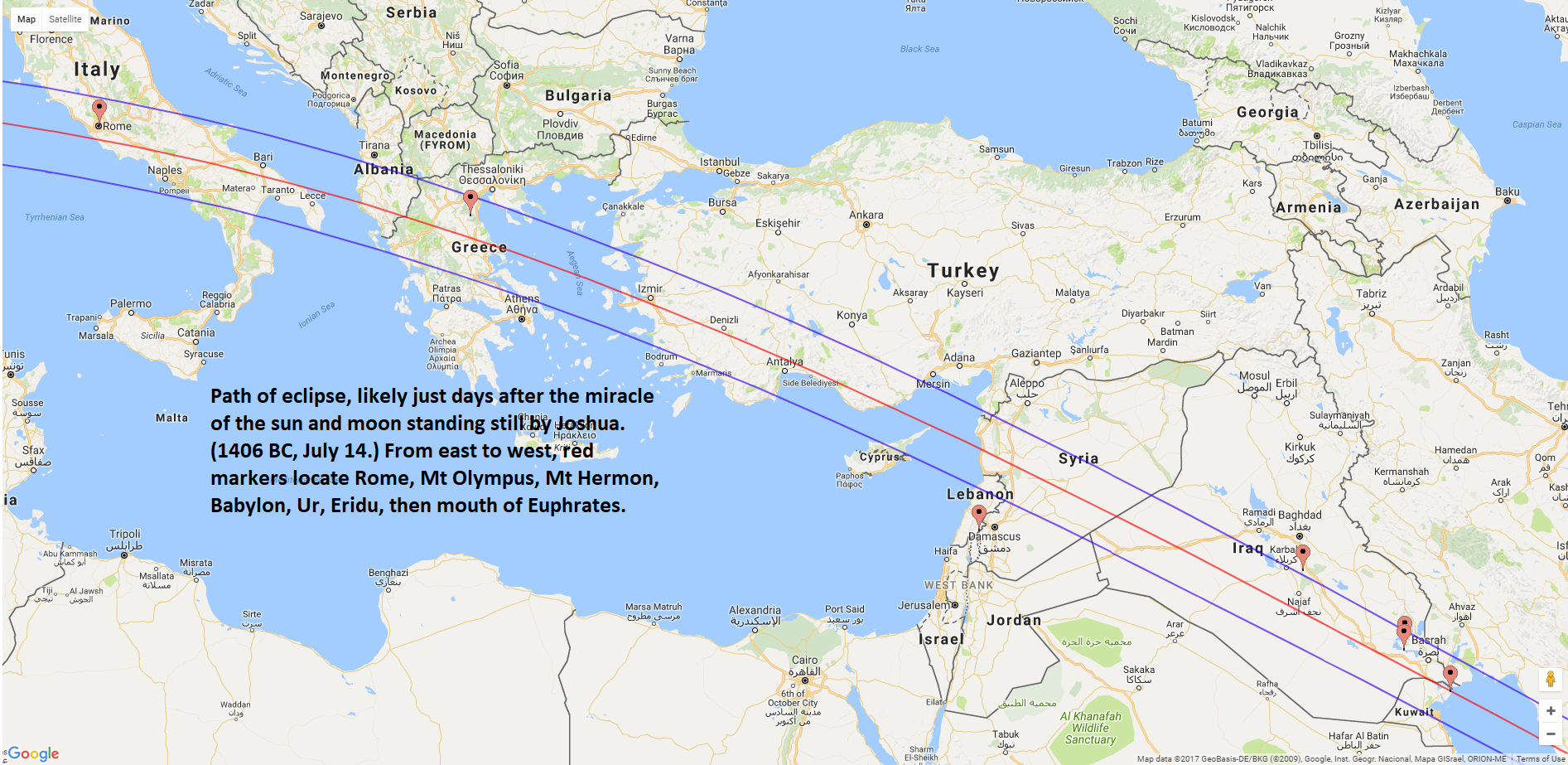
This Total Solar Eclipse Path likely took place just days after the miracle of the Sun and Moon Standing Still for Joshua. 1406 BC, July 14. (Note: My Starry Night program places the path of this eclipse further north, about 70 miles — closer to the actual northern boundary. [The map above shows its mean location.] #10a As the coming pattern of crossing eclipses in the Middle east in 2033-34, sealed by the Solar and Lunar Eclipse Tetrads follows a general pattern laid down by it’s 19-year Metonic Partner Eclipse Tetrads, we find a basis for the Celestial Encore following the general principles of The Celestial Prelude.
Moses prophesied the day he died “at 120 years of age” (i.e., 120.5) concerning the future of the 12 tribes of Israel. That day happened to have been exactly 6 months before the July 14, 1406 eclipse (Deut 1:3-4; 34:4-8). On this same day, Moses prophesied about two tribes that, when overlapped like the sun and moon in eclipse, foretold the eclipse of July 14, 1406 BC… The tribes of Dan and Manasseh (Joseph). #12
This comparison of celestial alignments not only within the Lunar Eclipse Sextet from 2014-2016, but also the Total Solar Eclipse of July 14, 1406 BC, with the Total Solar eclipse of August 21st, 2017 shows a series of solar and lunar eclipses on sacred feasts on the Calendar of Jubilees, that link ancient Israel to its modern State and City of Jerusalem. The history of Israel’s actions on its Feast Days, marked by repeating Solar and Lunar Eclipses over the centuries, are specifically quoted in Acts 2:17-20 “Before the Great and Notable Day of the Lord Comes“, prior to the Return of the Lord Jesus Christ For his Saints. For added context see Messianic prophecy of Hag. 2: 5-7. A timing focus on Hebrew feasts with the Aug. 21st, 2017 eclipse, link to Elul 1, opens a 40-day Season to Repent unto Yom Kippur–the Day of Atonement. The core conflict or spiritual enmity between the seed of the Woman vs. the Serpent’s seed in Gen. 3:15, notes a virulent blood feud and spiritual hatred seen throughout OT History, that now in the last days, we find once again in a return to the days that are like the days of Noah.
As the enemy’s desire to prevent the 1st Coming of the Lord Jesus Christ, by the genocide of Haman’s plot, foiled by the bravery of Queen Esther and Mordecai, that saved the Jews via the Hand of Almighty God in their day, so it remains their desire to inflict as much pain and destruction on Israel and the Christian world as possible today. God’s acts of righteous judgment will be completed as the evil ones of today are exposed and dealt with according to God’s perfect justice.
In our August 2015 post on the Partial Solar Eclipse; 9-13-2015, we referenced truths regarding Israel seen as a Fig Tree in the Bible. The following section from that blog provides a key foundation for the post on the Jewish Priest from the middle ages; Judah Ben Samuel’s Jubilee Prophecies. The Apostle Luke set the context with his prophecy of Israel as a Fig Tree.
Luke 21:24-33
“24 They will fall by [f]the mouth and the edge of the sword and will be led away as captives to and among all nations; and Jerusalem will be trodden down by the Gentiles until the times of the Gentiles are fulfilled (complete). 25 And there will be signs in the sun, in the moon, and in the stars; and on the earth distress of nations, with perplexity, the sea and the waves roaring; 26 men’s hearts failing them from fear and the expectation of those things which are coming on the earth, for the powers of the heavens will be shaken. 27 Then they will see the Son of Man coming in a cloud with power and great glory.28 Now when these things begin to happen, look up and lift up your heads, because your redemption draws near. 29 Then He spoke to them a parable: “Look at the fig tree, and all the trees. 30 When they are already budding, you see and know for yourselves that summer is now near. 31 So you also, when you see these things happening, know that the kingdom of God is near. 32 Assuredly, I say to you, this generation will by no means pass away till all things take place. 33 Heaven and earth will pass away, but My words will by no means pass away.”
Biblically, the Fig Tree is a symbol of Israel, as we will soon see. As Jesus told us in this parable in Lk. 21:29-32 that this generation would see the kingdom of God, that the Jews of that day rejected. Starting with the Blood Moon Tetrads of 1947-48 and 1967-68, that marked the formation of the modern state of Israel, we take note that they are 19 years apart, yet each of these Blood Moon Tetrads can be seen to represent a stage in the restoration of Israel, first as a nation, in 1948, and second with the recapture of its capital city of Jerusalem in 1967.
As we consider the history of the formation of the modern Jewish state, some have questioned; “Why wasn’t Israel fully restored in 1948, including the temple mount?”
Ans. In Ezekiel’s account of the fall of Jerusalem, God’s Spirit departs from the temple and leaves Jerusalem in specific stages (starting in 592 BC) and then comes back in stages 19 years later in 573 BC, (Ezek. 8:40). In the same way, Israel is now being restored in stages –each stage on a predicted time-frame in the Bible. The next stage in God’s plan for Jerusalem also happened exactly 19 years after Israel became a nation in 1948: The 1967, Six-Day War.
The next stage in Israel’s restoration was the six-day war waged exactly 19 years later, to the day, June 5-10, 1967. In this war, the Temple Mount was captured along with east Jerusalem, which included the day of Pentecost on June 5th, 1967.
But why 19 years later?
Ans. Because, from Ezekiel’s vision about the temple (573 BC) until when Israel became a nation are 1260 + 1260 years, that is 2520 years. (2520 days represents a seven-year period on the eclipse calendar; {2520 days.}) Thus, 2520 plus 19 more years equals 2539. And so, from 573 BC to 1967 are 2539 years.
So, what’s important about 2539 years?
Seven years on the regular Jewish calendar amounts to 2539 days in both 1948 and 1967. Thus, the seventh anniversary after Israel became a nation took place exactly 2539 days later on the regular Jewish calendar, (i.e., 1948-1955). And the same is true of the 7th anniversary of the 1967 War, (i.e., 1967-1974). Hence, in God’s heavenly schematic, 2539 days relate to the previous 2539 years back to the prophecy of Ezekiel in 573 BC!”#13
This is an example of a Biblical Prophecy with a dual significance that fits for both days and years. We will see another example of this when we discuss the “70 Weeks Prophecy” in Daniel 9, in a follow-up of this post next month, as it relates to the ministry of Jesus Christ among other things.
What has escaped the notice of most regarding Luke 21:24-33 is that Jesus’ prophecy on Jerusalem being over-run and controlled by the Gentiles, in Lk. 24 sets the immediate context of celestial signs in the Sun, Moon and Stars and the distress of the nations in verse 25. This directs our focus to heavenly signs around the periods bracketing the Roman’s destruction of the Jerusalem Temple in 70 AD, because this opened the period when the Jerusalem Temple was down-trodden by the Gentiles. Conversely, with Israel’s recapture of Jerusalem in 1967, with the events surrounding their control of the Temple Mount, we find the first stages of the restoration of Israel by God’s Hand. Since the Luni-solar eclipse cycles are part of the the heavenly signs of the Sun, Moon and Stars, including the modern Blood Moon Tetrads, there is much we can learn from the focus of this study.
Figure A. Blood Moon over Jerusalem.

What we also find in the repeating 19-year eclipse Metonic cycle linked to the history of Israel, is the annual pattern of sevens or the Sabbatical/ Shemitah septenary cycle built into the sequence. This pattern was first established with the Biblical temporal cycles starting in the Creation Week, setting the stage for Sabbaths pointed out in Jonathan Kahn’s books like ‘The Harbinger,” an early adopter pointing out a correlation of 50-year Hebrew Jubilee with the Sabbatical/Shemitah cycle, in the recent calendar cycle of 5776/ 2016. The key dates in 1949-50 and 1967-68 referenced above linked to Israel’s restoration, marked by modern Blood Moon Tetrads on Hebrew Feast and Holy days, form consistent levels of the divine pattern from the Hand of God, establishing the divine authenticity of these heavenly signs for those who are paying attention. [Gen. 1:14-18]
Figure A1. Select Revelation 12 Signs.
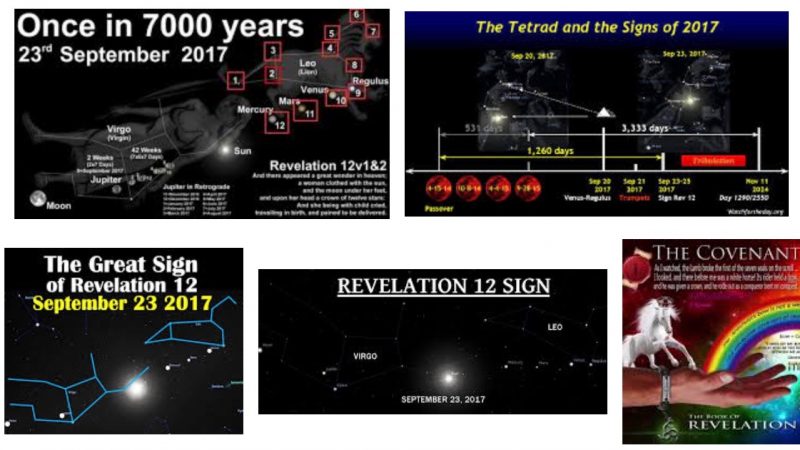
A key with the final Super Blood Moon of the recent 2014-2015 Blood Moon Tetrad is that it occurred after the Hebrew Jubilee opened on Sept. 23rd, 2015, 2 years to the day ahead of the notable Great Pyramid alignment signs. These Great Pyramid Alignments are pictured in the upper right graphic of Figure A1, above where the Christ angle of the Great Pyramid Shafts are aligned with a Venus-Regulus conjunction in Leo on Sept. 20, 2017. This occurs 1260 days from the first Blood Moon of the 2014-2015 Tetrad, showing a transition on the Countdown Clock from years to days. As the Super Blood Moon was the first Blood Moon of the 2014-2015 Tetrad visible in Jerusalem, this was a head-turner. Correlating with two previous Jubilees in 1917 & 1967, we find an intriguing history in 1917, as Jerusalem was liberated by the British Army under General Allenby, from the Ottoman Turks, only a few weeks after Balfour’s Declaration promised Israel a homeland. Since this Dec. 1917 date represents a series of Shemitah cycles totaling 2,520 years going back to 604 BC when King Nebuchadnezzar conquered Jerusalem, we find a link to Israel being lead away into the Babylonian Captivity.
During his campaign, General Allenby’s planes buzzed Jerusalem with many fly-overs, dropping surrender leaflets on the Ottoman forces, inducing the Turks to “wave the white flag” without casualty. As Isaiah discloses to us the way Jerusalem would be delivered;
Isaiah 31:4b-5: “so shall the Lord of Hosts come down to fight for Mt. Zion and for the hill thereof, As birds flying, so will the Lord of Hosts defend Jerusalem; defending, also He will deliver it; and passing over, He will preserve it.”
In this deliverance we can see the Hand of the Almighty working to fulfill this promise, even in the motto inscribed on the badge of the bomber squadron chosen to liberate Jerusalem which read: “I spread my wings and keep my promise.” This Squadron of the Royal Flying Corps took Jerusalem “as flying birds” and defended it, and passing over it, preserved it, fulfilling each detail of Isaiah’s prophecy.
As this background sets context for this study, let’s now consider the Judah Ben Samuel’s Jubilee Prophecies. Rabbi Judah Ben Samuel lived during the time of the Roman/Christian Crusades in the Holy Land between 1096-1270 AD. It was during this time that Rabbi Judah Ben Samuel began publishing his “Jubilee Prophecies,” complete with Gematria calculations, and Celestial notices. As news traveled between the Holy Land and Europe found its way to the rabbis and clergy in Worms and Regensburg Germany, the good Rabbi took many of the same steps as Martin Luther 300 years later, as he led the Reformation against the Roman Catholic Church in the “Diet at Worms.“ A synopsis of the Rabbi’s prophecies is found below;
“When the Ottoman (Turks) – who were already a power to be reckoned with on the Bosporus in Judah Ben Samuel’s time – conquered Jerusalem they will rule over Jerusalem for 8 Jubilees. Afterwards, Jerusalem becomes a no-man’s land for one Jubilee, and in the 9th Jubilee it again returns back into the hands of the Jewish nation – marking the beginning of the Messianic end time.”#14
Leviticus 25, tells us every 50 yr. Jubilee each one regains title to their lands. As Rabbi Judah Ben Samuel told the future, his predictions today seem to be amazingly accurate. But it was over 3 centuries after his death, before his first prediction came to pass. The recent Jubilee of 5776/ 2016 was a special hybrid of Shemitah/Jubilee cycles that coincided with an end of Judah Ben Samuel’s 10th Jubilee to seal the Messianic End times.
Although Judah Ben Samuel’s Jubilee Prophecies are extra-Biblical in nature, they embody another key historical layer of verification in the divine patterns of these signs of the last days, as seen in the 50-year Hebrew Jubilee. The veracity of these prophecies has been questioned, but when viewed in the context of the existing pattern of sacred Hebrew calendars of the Shemitah/Sabbath and Jubilees, with the Hebrew Feast & Holy days marked by modern Blood Moon Tetrads, about which Judah Ben Samuel referenced nothing in his writings, they gain the added credibility of the coordinated celestial signs from the Hand of the Almighty.
Ludwig Schneider of Israel Today Magazine translated Judah Ben Samuel’s (1140-1217) writings into English. “…According to his article, Rabbi Judah Ben Samuel was a Talmud scholar in Germany. Just before he died in the year 1217 he predicted that the Ottoman Turks would rule over Jerusalem for eight Jubilees, or 400 years (8 x 50). The Ottoman Turks took control of Jerusalem 300 years after the Rabbi’s death in 1517 and according to the prophecy, the Ottoman Turks then lost Jerusalem 400 years later in 1917. During WWI when British General Edmund Allenby took Jerusalem on Hanukkah with out firing a shot in 1917. This event falling on Hanukkah and the ease in how it occurred, make this moment in history very notable. Judah Ben Samuel’s prophecy also said that following the 8th Jubilee, the 9th Jubilee would find Jerusalem a no-man’s-land, which it was from 1917 to 1967, until the Six-Day-War. The Rabbi predicted in the 10th Jubilee-Israel would control Jerusalem, marking a start of the Messianic end times. The completion of this Tenth Jubilee brings us to the year 2017.”#14a It is key to realize that the conclusion of this 10th Jubilee in 2017, we also find 2nd Fulfillments of the original Rev. 12 heavenly signs in addition to marking the Birth of Christ in 3 BC. Dual references to these future aspects of the “Woman” in Rev. 12-5-17, were revealed as Jon Nessle taught us how future aspects of the “7 headed dragon with 7 crowns” echoes language in Daniel 7 and Rev. 13, as examples of 2nd fulfillments of the Rev. 12 heavenly signs, in our Mini-Summit on the Hope in 2017,#15 in Tampa. He also mentions how dual or multiple fulfillments of prophecy can hinge on various word meanings in line with what E.W. Bullinger teaches on the Figure of Speech “Gnome.” I also posted blogs in October and November of 2017 on these topics, for your reference. These would correlate to Judah Ben Samuel’s Jubilee 11: that opened on Yom Kippur 9/30/17.
From the Balfour Declaration on November 2, 1917–during the 1917-1918 Jubilee, to the retaking of the Western Wall during the 1966-1967 Jubilee, to the Jubilee from September 2015 to the fall of 2016, God was at work restoring His Blessings to Israel in stages. The Temple Mount seems a next logical stage of this restoration process, but the events remain to be seen in Jubilee 11, in how it all comes together.
In Israel’s War of Independence against five Islamic nations, Jerusalem was a “divided city.” The Jordanian government controlled east Jerusalem including the Temple Mount and the Old City. A strip of land divided Israeli control of Western Jerusalem and Jordanian run East Jerusalem. This strip of land was called “No-Man’s Land” by both Israelis and Jordanians. After the 6-Day War, on June 17, 1967, the Israeli Army controlled the entire West Bank and all of Jerusalem was returned to their possession, 750 years after Judah Ben Samuel predicted these events, the conditions of his prophecy were fulfilled.
Then came the Rabbi’s last piece of his prediction: “In the ninth Jubilee, Jerusalem will once again come back into the possession of the Jewish nation – which will signify the beginning of the Messianic end time.”
As we have already seen with our opening verses in Luke 21:24-33, Jesus’ prophecy relating to Jerusalem being over-run by the Gentiles sets the context for the end time heavenly signs of the Sun, Moon and Stars. The Scholars and Blood Moon enthusiasts have focused on the luni-solar signs, but have neglected their relation to Jerusalem. To understand this better, lets look at added evidence of this in Joel 2 setting the table for Joel 3.
Figure B. Jerusalem in 70 AD. #15a

Joel 2:30-32
30 And I will shew wonders in the heavens and in the earth, blood, and fire, and pillars of smoke. 31 The sun shall be turned into darkness, and the moon into blood, before the great and terrible day of the Lord come. 32 And it shall come to pass, that whosoever shall call on the name of the Lord shall be delivered: for in mount Zion and in Jerusalem shall be deliverance, as the Lord hath said, and in the remnant whom the Lord shall call.
This is a primary “Blood Moon Prophecy” that occurs prior to the victorious return of the Lord, FOR his Saints. These verses at the end of Joel 2 give us the immediate context for the prophecy relating to Jerusalem and the Gog-Magog alliance of Gentile nations we can see gathering around Jerusalem that set the stage for coming final battle of Armageddon at the start of Joel 3.
Joel 3:1-2
1 “For behold, in those [climactic] days and at that time, When I restore the fortunes of Judah and Jerusalem, 2 I will gather together all the [Gentile] nations [that were hostile to My people] And bring them down into the Valley of Jehoshaphat (Lord judged). And there I will deal with them and enter into judgment with them there For [their treatment of] My people, My inheritance, Israel, Whom they have scattered among the nations, And [because] they have encroached on My land and divided it up.
The sensational focus on the Blood Moon phenomena, not only in Christian circles but also in the secular media, has detracted from the reason for the Blood Moon Tetrads in the first place, which is the disposition of Jerusalem and specifically the Temple Mount that determines the final stages of God’s deliverance of Israel and the Church-the Body of Christ. The fact that we have completed the Blood Moon Tetrad of 2014-2015, and now find ourselves well past the Shemitah/Jubilee of 5776/2016 with added solar and lunar eclipses on Hebrew Feast–days, from 2017-2024, we have plenty of reason to keep our heads to the sky as part of “the generation that will see these signs come to pass“ serving the Lord Jesus Christ, into his victorious Return. [Lk. 21:32]
The “Jubilee“ for Jerusalem of today, depicts certain levels of God’s restoration of Israel, starting from a prior Gentile dominion of Jerusalem in 70 AD, when Rome ravaged the Jerusalem Temple. Joel 3:2 tells us Rome’s attack on Israel resulted in the Jews being either killed, starved, or sold as slaves. This history of the Gentile domination of Jerusalem first by Rome, next by Islamic armies, including the Ottoman Turks predicted by Judah Ben Samuel, held it till 1917, when Allied Forces under Gen. Allenby delivered the Holy city. From 1917, the next Jubilee was a 50 years later in 1967. With a return of Jerusalem to Israeli control in 1967, it makes 1966- Shemitah #49. The pursuant Jubilee =(7 cycles of 7 Years = 49): 1966+ 7×7= 2015. Since 70 AD, Old Jerusalem was not under Israeli rule till the 6–day war with Egypt in 1967. This liberation of the City of Jerusalem on June 7, 1967 was key pivot point in a recent Prophetic past, specific to the End Times, with the 6-day war-of June 5-10, 1967, exactly 19 years after the New State of Israel was formed in 1948.
In the Balfour Declaration of Nov 2, 1917, British Foreign Minister Balfour pledged support for establishment of a “Jewish national home in Palestine.” During this 1917-18 Jubilee, there were other heavenly signs and planetary conjunctions taking place telling related parts of this story of the restoration of Jerusalem and Israel. Mar’s retrograde motion embodied the Warrior Archangel Michael fighting for God’s people, moved in conjunction with the King star Regulus in Leo, depicting conflict surrounding God’s restoration of His people, vs. our spiritual adversary who stands against God’s purposes at every turn. This retrograde motion of Mars began in Leo, then progressed into Virgo’s head, returned into Leo, depicting the Celestial Sphinx, in the body of Leo the Lion with the head of the woman Virgo, symbolizing a restoration & unity not only for Israel, but also with the Lord Jesus Christ and his Angelic cohorts under the Archangel Michael.
The Celestial Sphinx as seen below follows the structure of the Great Sphinx on the Giza Plateau. In addition to marking the Alpha and Omega signs of the Celestial Canon, the Great Sphinx mirrors the binding of Scripture together from Genesis to Revelation, as seen in the references to Jesus as the Lion of the tribe of Judah in both Gen. 49:8-10 and Rev. 5:5, the first and last books of the Bible. Another indicator of the key importance of these stellar aspects of the Great Sphinx, is that our recognition of the Celestial Sphinx, Virgo and Leo the Lion provide a basis for the signs of the triple union of Jupiter-Regulus in Leo, in 3 BC related to Gen. 49:8-10. This is a foundation key linking the Sphinx both to the Celestial Gospel & God’s Word, in their unified testimony to the Coming Promised Seed.
To continue a sub-theme of Hebrew Jubilee planetary unions of Mars during its retrograde motion, we find added evidence during the 1967 Jubilee, in between the Passover Blood Moons on [4-24-67] and on Sukkot [10-18-67]. The Mars retrograde looped around Virgo’s womb area opening March 10th through June 24th. During this loop Mars neared union with the Alpha Star of Virgo–Spica on June 6th, completing its loop around the womb of Virgo, a few weeks later. This again embodies the conflict germane to God’s deliverance of Jerusalem from the spiritual enemy, as the city of Jerusalem was wrested from Gentile domination, seen in the rebirth of Jerusalem under Israeli control. The planetary activity in 2 previous Jubilees depicts restoration of Israel with Mars-Michael, as an exciting lead-up to the 2017 Jubilee, when Jupiter the king planet-God’s Holy Sceptre, finished a retrograde loop of Virgo’s womb, symbolized a birthing of the Kingdom of Jesus Christ, with God’s Angelic warriors in conflict with enemy spirit realms emphasized here with the triple conjunction of Mars-Spica, unifying the four fold ministry of Christ with angel cohorts of Michael the Warrior Archangel.
Figure C. The Celestial Sphinx. #16
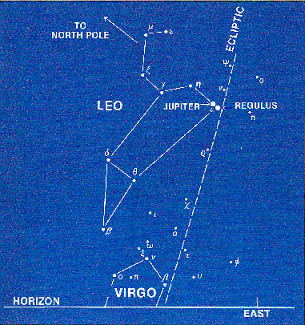
As we view the celestial context of this first union of Jupiter and Regulus, [Fig. B] marking the birth of Christ, we can see the head of Virgo rising above the eastern horizon under the full body of Leo the Lion on the ecliptic. This views what an observer standing near Palestine facing east would have seen on this date, providing a clear aspect of the astronomical symbolism of the Sphinx as an important marker and monumental predictor of Jesus‘ birthday on Sept. 11, 3 BC, a prophecy of the birth of Christ preserved in stone on the Giza Plateau from antiquity! This serves as a monolithic marker to the prophecy provided in Rev. 12:1-5, in the constellation Virgo, further establishing this truth.
This leads us directly to the eclipses marking the American Century that we have seen in our lifetimes.
The American Century in Eclipses.

Two sets of Eclipses define the American century. The first set defined its beginning…a cross country USA eclipse on June 8, 1918…7 eclipse years (2422 days) later, an eclipse cut across the Northern US from Minnesota through New York City. The second set defines its end…starting with a cross-country USA eclipse on August 21, 2017… seven eclipse years (2422 days) later, an eclipse cuts south to north through New York State ( the “empire state”)…#17
Between 1918 and 2017-the USA cross country eclipse was 36, 234 days. And Between 1925 and 2024 USA eclipses was also 36,234 days… Between each matching member of the pairs is 99 years and 74 days… or 1190 months and 13 days… This embodies the True American Century written in eclipses, and bracketed by 7-year eclipse pairs.
June 8, 1918
In this illustrated Map of June 8, 1918 eclipse, Mt. Saint Helens is center of totality. The only Eclipse that traveled across the entire contiguous USA before 8-21-2017 was June 8, 1918. During this time the US was embroiled in WWI— and at the start of a Spanish Flu Pandemic …note incredible similarity to path of 8-21-2017 USA eclipse. This marks the beginning of US dominance in world affairs.
2422 days from Jan 24, 1925 US eclipse
36,234 days from August 21, 2017 US eclipse
Jan, 24, 1925
At the mid-point of the roaring 20’s on January 24, 1925, a total solar eclipse across the northern USA from upper Minnesota provides the last total solar eclipse in New York City, the new epicenter and empire of western culture, (“empire state”). New York was home to the financial and cultural centers of the nation–Wall Street, Broadway & Vaudeville, Tin Pan Alley—the city was treated to rare clear skies and the eclipse was widely observed. The eclipse path crossed the Atlantic ocean to extreme northern latitudes, Nearing totality at Kennedy’s Family Home.
2422 days from June 8 1918 US eclipse
36,234 days from August 21, 2017 US eclipse
USA- 3 Solar Eclipses in 7 years starting in 2017 – See the A? #18
It’s hard to find any nation in history so perfectly trisected by solar eclipses geographically as the USA is by eclipses on 8-21-2017, 10-14-2023 and 4-8-2024…over a 2422 day span. “A“ is for Alpha, (Hebrew) Alef , this “A” is comprised of three lines, and two X’s. The 8-21-2017 and 4-8-2024 are Hepton Total Eclipses, both falling on Monday’s. Hepton Eclipses are 7 eclipse seasons. Each eclipse in a Hepton is followed by an eclipse 3 saros series before, always taking place at alternating Lunar Nodes. It is equal to 41 synodic months. The interval is near a whole number of weeks (172.96), so each eclipse is followed by another that is usually on the same day of the week (moving backwards irregularly by an average of a quarter day). At any given time there are seven hepton series active.#19
HEBREW IS READ RIGHT TO LEFT… ALEF AND THE TAV

Paleo-Hebrew was the script in which the Old Testament was written, not the modern script that is currently used (being standardized around 200 B.C.)
On the left is a Tav–the last letter (22nd) of the Hebrew alphabet– essentially a cross or X in the above illustration.
On the right is the Paleo-Hebrew Aleph–the first letter of the alphabet.
The Tav is being written by the shadow of the moon on both locations.
The Aleph-(where we get Alpha and our letter A) is written by shadows of the 2017, 2023 and 2024 eclipses on the USA. #4 Jesus is the Alpha & Omega as seen in Rev. 1:8-17.
The Alpha and the Omega

Reading right to left, “I am Alpha and Omega, the beginning and the end, the first and the last.” –Rev. 22:13… go back and look at the Aleph (A) over the USA mapped in last section.
Total Solar Tav over America-2017 and 2024
It’s a cross. It’s also a Tav, the last- 22nd, letter of the original Hebrew alpha-bet. It means truth. In the Greek alphabet, X is the symbol for a letter ‘chi. ‘ Chi (or X); the first letter in the Greek word for “Christ” that stands for the word “Christ“, which is why people can write “Happy Xmas.” In the early days of the Christian church, Christians used the letter “X“ as a secret coded symbol to indicate their membership in the church to others.
The above map illustrates the Total solar eclipses of 2017 and 2024 over America, both on Mondays, separated by a 2422 day (7-eclipse year) span.
The Mideast Eclipses of 2027 and 2034—see the X

[map from 1260d.com]#20
As the author points out this eclipse crossing in view of the Giza Plateau, embodies the southern border of the land promised to Abraham by God in Gen. 15:8, [see Ex. 6:1-8]. Giza’s Plateau is also the locale of the Great Pyramid that will see a return of celestial signs and planetary unions like the aligned Venus-Regulus signs in Leo in Sept 20, 2017, that are due to return in 2028 AD.
As we have just concluded 120 hours of teaching in our OT History class over 1.5 years, we saw the Jews dwelling in the land of Israel for 1900+ years that started with Abraham! This evident truth of Bible history will never be erased by holocaust denying terrorists. On Aug 2nd, 2027 and March 20, 2034- Total Eclipses intersect near the Valley of the Kings in Egypt… also separated by a 2422-day span (7 Eclipse Years). Like the USA Total Eclipses, both are Hepton Cycle eclipses taking place on Mondays. All 4 crossing eclipses are members of the same Hepton Cycle. 27 AD to 34 AD also contains all the probable dates for the Crucifixion, Resurrection & Ascension of Jesus Christ, marking the notice of their 2000th Annivrsary!
AMERICAN OMEGA–THE TOTAL ECLIPSES
Monday Aug 21 2017
The USA divided in half on Aug, 2017. 7 months and 1 day after Trump’s 1st Inauguration, as 45th President. First day of the month of Elul, in Hebrew year 5777. In Jewish tradition, the month of Elul is a time of repentance in preparation for the High Holy Days of Rosh Hashanah and Yom Kippur.#21
Monday April 8 2024
2422 days later, the USA is divided South to North, along with Mexico and extreme Eastern Canada. This occurs 8 days after Easter and 14 days before Passover. 7
The Mideast eclipses occur on boundaries of this 2,000th year anniversary, but no solar eclipse can naturally occur on the exact day’s anniversary. Jesus was crucified at Passover (full moon). Solar eclipses take place at New Moon.
The total eclipses occur 7 eclipse years (draconic years -346 days) apart, both on Monday –Moon Day. A span of 2422 days. They are part of a unique series of Hepton Eclipse groupings.#22
NOW ADD THE GREAT 10-14-23-AMERICAN RING OF FIRE ECLIPSE.
Ring of Fire 2023
531 years and two days after Columbus discovered America, an Annular eclipse creates a ring of fire from Oregon to Texas and then on to South America, October 14th 2023, one of 3 U.S. solar eclipses in the USA in Seven Years, [2017-2024].
Extremely significant Ring of Fire eclipses also occur during this time frame… including;
12-26-2019 Tsunami Anniversary Eclipse.
6-21-2020 Solstice/Father’s Day Pandemic Eclipse,
6-10-2021 Canadian Judgment Eclipse,
10-14-2023 USA Ring of Fire Eclipse.
There are many ways to look at this grouping but it seems to demand inclusion due to its obvious boundaries around the USA. There are three eclipses in 7 years in the USA as the nation was perfectly trisected. The fact that our nation was politically divided and subdued during this time frame stands clear as a historical fact, under the Biden Administration.#23
USA Ring of Fire Eclipse, Central America, Exits Brazil

The 10-14-2023 USA Ring of Fire Eclipse entered Oregon–center of annularity coming ashore near Florence at 9:05 am. Oregon’s second eclipse in 7 years- and heads across the Southwest USA. Crosses Gulf of Mexico, Yucatan, Central America, across the Amazon and exits into the Ocean at Natal, Brazil. Natal is Portuguese for Nativity.#24
Over the Cross of the Four Corners
The only place in the USA where four states meet and form a cross, the sacred lands of the Four Corners region. The Eclipse path perfectly covered this Cross as it travels over some of the most beautiful areas on planet earth, including confluence of Green and Colorado Rivers, several national parks and centers of the lost Anasazi Civilization like Chaco Canyon and Mesa Verde.
Corpus Christi–The Body of Christ

The eclipse exits the USA at the exact centerline of annularity directly over the city of Corpus Christi, Tx (Body of Christ) – The only city in America that bears such a name. The eclipse then traverses the gulf of Mexico before crossing the Yucatan.#25
Ring of Fire Eclipse 10-14-23

A “Ring of Fire”/ Sunflower Annular eclipse passes over the western US on 10-14-23 before traveling to the Yucatan and crossing northern Brazil, 177 days before the Spring 2024 total eclipse.
Remember! Total and Annular Solar Eclipses are rare. To have 3 completely trisecting the USA in 7 years is nothing short of incredible. One eclipse is past-the Great American Eclipse of Aug 21 2017, The next total solar eclipse in the USA arrived 2422 days later on April 8, 2024, It will be the only Total solar eclipse to touch all three nations in the 21st Century. The shadow paths of these two eclipses mark an “X“ over America’s-central point just south of Carbondale Illinois, specifically near Salem Road near east bank of Cedar Lake.
These Hepton Total Eclipses occur 7 eclipse years (draconic years -346 days) apart, both on Monday –Moon Day. A span of 2422 days.#26
The exact midpoint of the Total eclipses is 1211 days. That date turned out to be Dec. 14, 2020…It so happens there was another total solar eclipse then on the other end of the Americas, also a Hepton Eclipse, also on Monday, coincided with a dark day in political history of the USA;
MONDAY 12-14-2020- MIDPOINT OF USA MONDAY JUDGMENT ECLIPSES
Joe Biden is confirmed President by Electoral College

The precise midpoint of the 2017 and 2024 USA eclipses was Dec. 14, 2020. On that day, between 10am and 5pm Eastern time, the Electoral College certified Joe Biden and Kamala Harris as President and Vice-President of the United States of America. A significant Monday Total Solar eclipse perfectly spaced between two Total Solar Monday eclipses.#27
7 eclipse seasons–1211 days– in either direction brings you to the USA Eclipse Judgments of 8-21- 2017 and 4-8-2024 which themselves are exactly;
7 eclipse years apart.
7 eclipse seasons is 3 and 1/2 eclipse years … 34 months to the day before the USA’s Ring of Fire eclipse.
TWO TAVS MAKE AN ALEF / USA ECLIPSES, totally unique 2024

The April 8, 2024 Eclipse will be the only one to cross Mexico, USA and Canada in the 21st Century. It takes place 8 days after Easter on a Monday. Texas will get its second solar eclipse in 6 months.#28
First Tav–Annular 2023 and 2024 Total Solar Eclipses.

Here is the cross/ Tav / X / Omega formed by a weekend 10-14-23 Ring of Fire and the 4-8-24 Total solar eclipses, 177 days apart. They cross in Texas over the hill country, near San Antonio. This second TAV that completes the Alpha over America.
Second Tav– Total Eclipse Tav-2017 and 2024

And here is the Tav formed by the 2017 and 2024 Total USA Solar Eclipses, their intersection south of Carbondale Illinois, at Salem Road on the East edge of Cedar Lake.#29
And The Alpha-The sum of the Two Tavs

Once again, the shadows of the three eclipses that occur in a 7-year span clearly write the letter A upon the United States. It is Alef, Alpha. Perhaps those with wisdom will reckon these days.
USA 8-21-2017
Total Eclipse/ Hepton Cycle Monday Eclipse. The Great American Eclipse. The most viewed American eclipse of all time. America Divided. First major city in totality was Salem, Oregon–the largest US city named after Jerusalem. Before this, the last eclipse visible in the US was Feb. 26, 1979, seen only in the Northwest.#30
Eclipse Feb 26,1979
Last USA Total eclipse for 38 years. Totality over Mt. St. Helen’s; (1222.2 degrees long.). 388 days before she awoke with an earthquake on March 20 1980, Spring Equinox, before she exploded to due north on May 18, 1980 in the largest volcanic eruption in modern Continental US History. Opening of the Hi-tech era. The final era of the American Empire and the creation of one of the last world Empires.#31
American Judgment 4-8-2024
Eclipse Judgment: A pattern of ongoing solar eclipses which mark with shadow paths the histories, deeds and destinies of the great empires and civilizations of man. Here at this section, we primarily focus on the exact 19 solar year period between the Spring Equinox Eclipses of 3-20-2015 and 3-20-2034. The eclipses within this 19-year period occur in profound relation to the upcoming 2,000th Anniversary of the Crucifixion, Resurrection & Ascension of the Lord Jesus Christ, that took place around the Spring Passover 28 AD. This key Christian Anniversary adds to those who attach a spiritual importance to the heavenly signs. In fact, Mount St. Helens Eclipse Totality occurred near its eruption like few other catastrophic events in history. Eclipses don’t tell stories as we may expect. As the Almighty Creator spun the planets and stars in their courses according to His Divine Wisdom, they can appear as a kind of sacred Symphony in Nature, a reflection in Time of the ABBA- Heavenly Father, Who rules from far above the temporal world. A Bible catalog of Heavenly signs ie; eclipses, lunar occultations, planetary alignments, comets, Blood Moons, Novae and the like, may carry their messages, and/or warnings of impending judgment which we have covered in some cases on this website.

Hepton Cycle: Monday Total Solar Eclipse. Finishes both Tavs and the Aleph over the USA (2nd Tav pictured above). The Alpha/Omega sign 8 days after Easter, 2422 days from USA eclipse of 2017, 1211 days after Election Eclipse of 2020, 177 days after Ring of Fire eclipse of 10-14-2023. Do the eclipses embody a warning for America? By completing both Tav’s and the Aleph-the Alpha and Omega signs have been written and signed by the Hand of the Almighty. They also may be seen as the first of Two Witnesses or a Celestial Prelude to a Celestial Encore of the upcoming Mideast Eclipses of 2027 & 2034.
A Metonic Cycle is a 19- solar year period of time bordered by the exact same solar date, lunar phase & ecliptic reality. This matches Solar Spring Equinox Eclipses on 3-20-2015 and, 19-years later on 3-20-2034. Both dates bordered by lunar eclipse tetrads that fall on the high holy days of Judaism (Passover and Feast of Tabernacles). Within this Metonic are a series of eclipses that mark world empires of man, both along the anniversary years and around them.#32
Lunar Eclipse Tetrads announce the Metonic
The North Pole Spring Equinox Total Solar Eclipse of 3-20-2015 is the official Solar beginning of the Metonic we are considering, but its bordered by a extraordinary set of lunar eclipses, which created quite a stir in some circles. The so-called “Blood Moon ” Tetrad of 2014 and 2015 brought successive lunar eclipses on the high holy days of Judaism. Passover (April 15) and Feast of Tabernacles (October 8) in 2014 and again Passover (April 4) and Feast of Tabernacles (Sept 28) in 2015… between these events was the singular 3-20-2015 Solar Eclipse which ended directly at the North Pole. It’s unclear if any eclipse in history has ever done such a thing.#33
Tetrads also announce the end of Metonic
There is another perfect lunar tetrad (meaning total eclipses) in the years 2032 and 2033. Between the the years 2033 and 2034 the lunar eclipses land again on the high holy days of Judaism.
2033–April 14 and October 8
2034–April 3rd and September 28…you will notice that these dates are essentially the same as the Lunar tetrads of 2014 and 2015. That is how the amazing 19-year Metonic cycle works.
A 19-year Chapter to write the Final Story
19 solar years is exactly 235 lunar months, and exactly 21 [7×3] eclipse years (eclipse years are 346.62 days). Within this time frame are this pattern of Metonic cycle Eclipses. Does the time frame start between the lunar or the solar? Is it the Blood Moon Tetrads that announce the beginning and the end of the cycle, or is it the tremendous Spring Equinox Eclipses of 2015 and 2034 that rest between them? In evidence shown below with the Countdown Clock seems to lean towards the Blood Moon Tetrads.
LUNAR ECLIPSE HOLY DAY TETRADS AND EQUINOX ECLIPSES
The Beginning of the Blood Moon Metonic
The only lunar eclipses considered in our survey involve the High Holy day Tetrads. They occur on the 19-year Metonic just as the Solar Equinox Eclipses fall on matching calendar days of 3-20-2015 and 3-20-2034.
Lunar eclipses on the High Holy Days of Judaism in the years 2014 and 2015 bracket a Total eclipse of the Sun on the Spring Equinox of 2015 ( Jewish and Muslim New Year) that ends immediately at the North Pole. Only 7 such lunar eclipse tetrads have occurred since the coming of Jesus Christ 2,000 years ago. A Blood Moon Tetrad occurred between 1493 and 1494 shortly following the expulsion of the Jews from Spain in 1492 and the discovery of the New World.
A Blood Moon Tetrad occurred between 1949 and 1950 on Passover, after the 1948 declaration independent Jewish state, followed by the war for Jewish independence.
A Blood Moon Tetrad occurred between 1967 and 1968, following the 1967 “Six Day War,” during which Israel liberated the entire city of Jerusalem, including the Temple Mount where the First and Second Temples once stood. For the first time in 2,000 years, Jerusalem, in its completeness, was the city-capital of the Jewish state. A lunar tetrad occurs in 2023 and 2033 and a High Holy day Tetrad occurs in the years 2033 and 2034 (though the eclipses will not be total in year 2034).#34
The End of the Blood Moon Metonic
They occur on the 19-year Metonic just as the Solar Equinox Eclipse match calendar days of 3-20-2015 and 3-20-2034. A Lunar Tetrad occurs in 2023 and 2033 and High Holy Day Tetrads occur in the years 2033 and 2034 (though the eclipses are not total in year 2034). In each case, a key Solar Eclipse on the Spring Equinox is bracketed by Lunar Eclipses occurring on high holy days of Judaism. #35
The author of portions of this study via his website gives some urgent
[https://eclipsewitness.com/eclipse-judgment-series] celestial history here that I’ve supported with added evidence in a convincing context. The celestial structure of these Luni-solar eclipse signs is not something for one to over-look or ignore. If you do, you do so at the your own risk. These celestial signs surrounding the 2000th notice of Christ’s Crucifixion, Resurrection and Ascension are not a “coincidence,” being a direct by-product from the Hand of our Almighty Creator, of these celestial cycles, the God and Father of our Lord Jesus Christ.
There is certainly much in current events regarding Jerusalem coinciding with these celestial signs. On Dec. 6th of 2017 in Trump’s 1st Admin., he released plans to move the US Embassy to Jerusalem. Predictably, some Islamic nations defied this recognition of Jerusalem by a major world power, linked to Israel. The timing of this was noteworthy as the Jubilee calendar marked other key events related to Jerusalem in recent history. As we correlate 2 previous Jubilees in 1917 and 1967, we find a previously noted history in 1917, as Jerusalem was liberated from the Ottoman Turks by Gen. Allenby, & his Army of Brits, only weeks after the Balfour Declaration promised Israel a homeland. This date in Dec. 1917 shows a record of Shemitah’s totaling 2,520 years, began 605-4 BC, when King Nebuchadnezzar took Jerusalem, & led Israel captive to Babylon. In the Balfour Declaration-Nov. 2, 1917-in the 1917-1918 Jubilee, to retaking the Western Wall in the 1966-1967 Jubilee, to a recent Jubilee in 2017-2018, we see God working to restore His Jubilee Blessings to Israel in stages.
The Temple Mount may to be a next stage in a restoration process, where we can see provisions for a third Temple in Jerusalem. The new US Embassy was opened on the rebirth of the 70th anniversary of the State of Israel-May 14th, 2018. An aspect of the Biblical Jubilee is the restoration of the land to original owners, thus it is interesting to see this progressive restoration of the lands to Israel including Jerusalem, to the people who have returned to live in the modern State of Israel.
The great 2520 year period is called the Great 7-times of prophecy in Levi. 26: 18, Then I will punish [3256] you seven times more for your sins. v.21 Then, if you walk contrary to Me, and are not willing to obey Me, I will bring on you seven times more plagues, according to your sins. v. 23 And if you will not be reformed [3256-yacar] by Me by these things but will walk contrary to Me, v. 24 Then I also will walk contrary to you, and I will punish [3256] you yet seven times for your sins. v. 27 And after all this, if you do not obey Me, but walk contrary to Me, v. 28 then I also will walk contrary to you in fury; and I, even I, will chastise [3256] you seven times for your sins. [3256-yacar; repeated 4x]
God is certainly making a point in this record among other judgments, what He brings upon Israel if they continue to walk against Him in all their ways. After the repetitions of 7 times of Judgement, it also records the desolation of their cities including Jerusalem, and how their lands will not produce for them since Israel ignored the pattern of sabbaths to rest their lands [Levi. 26:34-37, 42-46] as God commanded–leading to the Jubilee Sabbaths.
Israel lost sovereignty in 605-4 BC, for a perfect 2520–year period, minus 70 years captivity in Babylon, fulfilled in 1948 when Israel regained freedom. In 586 BC, the city of Jerusalem was destroyed as well as the Temple. This took place 19 years after 605 BC as Nebuchadnezzar removed their national sovereignty and sat King Jehoiakim as vassal ruler, (2 Kings 24:1). Using 586 BC as an incept point of another time measurement, when Jerusalem was destroyed, another 2520–year period (again minus 70 years for its captivity) fulfilled in 1967 when Israel recaptured Jerusalem, June 7, 1967. In God’s Eternal Covenant in Israel; His people were detached from the land God promised them for a time, (Ps. 105:7-45) but its ultimate fulfillment is in accordance with Their Perfect Judge.
The City of Jerusalem and the Temple lay desolate for 70 years. After that period of desolation, the 2520-Year countdown began and culminated on June 7, 1967 when Israel regained control over Jerusalem. They also got control of the Temple Mount, but they had to return control back to the King of Jordan, who still retains control of the Temple Mount today. In the 20th century, the Nation of Israel regained sovereignty, celebrating Independence on May 14, 1948. Nineteen years later, the city of Jerusalem came under Israeli control on June 7, 1967. The Gentile dominion over Jerusalem is structured in 2-1260 year periods [1260 x 2 =2520] leading up to the current countdown in the end times, where we can see a transition from 2520 years, to 2520 weeks, to 2520 days, highlighted by periods based on 7-year eclipses. As the time periods on God’s Clock decrease from years to weeks to days and even hours, [Rev. 9:15] so the clock ticks unto a countdown of the return of the Lord Jesus Christ, with our deliverance. In this “Countdown Clock“ I think we find an example of what’s called in God’s Word [Mt. 24:22, Mk.13:20] “The Lord Shortening (2856) of days…” This “Shortening” is (G2856-koloboo; to dock, or abridge) from, G2849–kolazo; curb, curtail, chastise, punish, reserve for infliction), that fits with End Times judgment or corrective acts. Acts 4:21)
Its found in 2 Peter 2:9
9 The Lord knoweth how to deliver the godly out of temptations, and to reserve the unjust unto the day of judgment to be punished:
In Leviticus 26:18 above, God warned Moses, if his people didn’t repent and return after their captivity, God’s 7-times judgment would befall them. We have already seen 2520 years of judgment in the 1260 x 2 years of Gentile dominion over Jerusalem in history.
Bullinger believed that these 1260 year periods marking the Gentile’s dominion over Jerusalem and its Temple in history, foreshadowed 2-1260 day periods in the last 2520 days, leading to final fulfillment of the Abomination Desolation, during the Great Tribulation, [2 Thess. 2:1-4]. A precursor of this period of the Gentile dominion fullness may be seen in 1260 days of heavenly signs from the 1st Blood Moon Eclipse of 2014-15 Lunar Tetrad, 2 years before the Rev. 12 sign, 9/23/17, presaging 2 periods of 1260 days in the coming tribulation of, [Rev. 11:1-3, 12:6, 14-17, 13:5].#36
In Figure A1, above the Christ angle of the Great Pyramid Shafts were aligned with a Venus–Regulus union in Leo, 9/20/2017. This occurred 1260 days from the first Blood Moon of the 2014-2015 Tetrad, in a transition on the Countdown Clock from 2520 years to 2520 days. As the Super Blood Moon was the first lunar Eclipse of this Tetrad, visible in Jerusalem, it alerted us! But the last Lunar eclipse of the 2014-15 Blood Moon Tetrad-a Super Blood Moon, also visible in Jerusalem on Sept. 28, 2015, occurred 2520 weeks from as the 6-day war ends, during the previous Blood Moon Tetrad of 1967-68. As Israel’s rule was reclaimed over over Jerusalem for the 1st time since 70 AD, it showed a transition on the Countdown Clock from 2520 years, to 2520 weeks to 2520 days, the first 1260 days of these 2520 days, counted from the first 2014-2015 Blood Moon Tetrad, to the Rev. 12 sign, @ 9/20-23/17.
This is an eye opener as we recall the 7 weeks/49-day count between Passover and Pentecost, that forms a basis for the 7 weeks of years leading to the 50 Year Jubilee on the Hebrew Calendar, seen in the 50 year period between 1967-68 to 2017-18. This gives us a common standard for calculating weeks, days & years in Bible time-keeping, established in the feasts of Passover, Pentecost and the Hebrew Jubilee. This manner of Sabbath counting applies to a week of days, as the weekly Sabbath; a week of weeks, as counting Passover to Pentecost; a week of years bringing a Sabbath Year; or even a week of Sabbath Years, as a Jubilee. And seen linked in the two princes of [Daniel 9:25-27] with Jesus, it was a literal week of seven days, but with the anti-Christ it is a week of seven years wherein he disrupts temple sacrifices in a viable 7-year tribulation at the halfway mark of 1260 days.
Just to be clear, I’m not making any predictions based on the material presented above, but I am pointing out some very interesting historical correlations from various viewpoints to spur some consideration and discussion. As always I welcome all Comments and Questions!
Portions of this blog are a summary from other studies along with sections of an article on these 3 eclipses that started in August 2017. Please refer online to; [https://eclipsewitness.com/eclipse-judgment-series] where you can find more info on this topic for your personal study…
God Bless!
Rene’
Footnotes
1. Strong’s Concordance, H8403, James Strong.
2. IBID; H1129–banah, James Strong.
3. IBID; G5262–hupodeigma, James Strong.
4. https://eclipsewitness.com/eclipse-judgment-series
5. https://en.wikipedia.org/wiki/Eclipse_cycle#Repetition_of_solar_eclipses
6. https://www.bible-codes.org/Blood-Moon-Prophecy-Tetrad_AD2014-2015_2061-2062-Bible.htm
7. https://www.1260-1290-days-bible-prophecy.org/Jubilee-missing-Sabbaths.htm
8. https://1260d.com/2017/06/22/shemita-solar-eclipse2017/1406bc-eclipse-rome-leo/
9. IBID
10. Stellarium Astronomy Software: Total Solar Eclipse near Regulus in Leo, 8/21/2017.
10a. https://1260d.com/2017/06/22/shmita-solar-eclipse2017/1406bc-eclipse-rome-leo/
11. https://eclipse.gsfc.nasa.gov/SEatlas/SEatlas.html
12. https://1260d.com/2017/06/22/shmita-solar-eclipse2017/1406bc-eclipse-rome-leo/
13. https://1260d.com/2017/06/22/shmita-solar-eclipse2017/
14. Israel Today Magazine, Ludwig Schneider [March 2008]
http://issuu.com/ryaninzion/docs/israel_today_march_2008
14a. IBID
15. “Comprehending the Choreography of the Divine Starry Dance.” 9/17 ppg. 17- Jon Nessle.
15a. Figure B Picture credit, [templemountlocation.com]
16. Figure C picture credit on the Celestial Sphinx. “Jesus Christ our Promised Seed”, p. 45. American Christian Press, VP Wierwille.
17. https://eclipsewitness.com/eclipse-judgment-series
18. IBID
19. [https://en.wikipedia.org/wiki/Eclipse_cycle#Repetition_of_solar_eclipses]
20. map from 1260d.com
21. https://eclipsewitness.com/eclipse-judgment-series
22. IBID
23. IBID
24. IBID
25. IBID
26. IBID
27. IBID/https://eclipsewitness.com/eclipse-judgment-series
28. IBID
29. IBID
`30. IBID
31. IBID
32. IBID
33. IBID
34. IBID
35. IBID
36. “Witness of the Stars”, p. E.W. Bullinger
